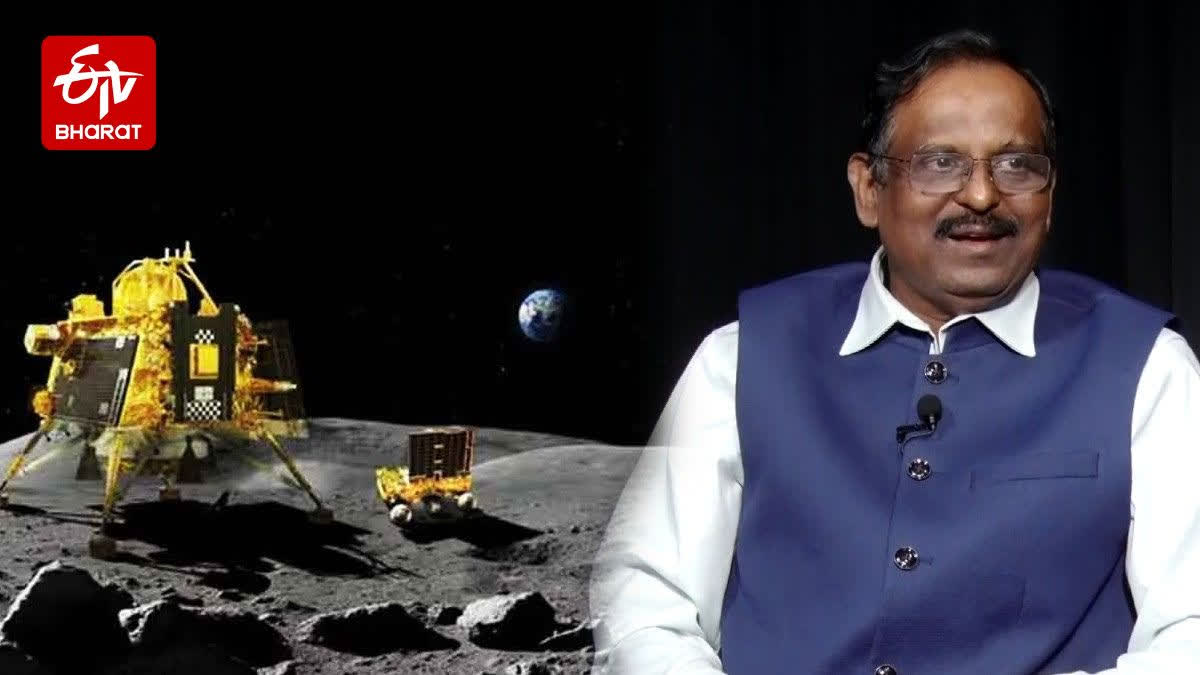Bengaluru: India is preparing to launch the Gaganyaan and Samudrayaan missions next year, followed by the Chandrayaan-4 mission in 2027. ISRO Chairman V Narayanan, in an exclusive interview with ETV Bharat representative Anubha Jain, shared insights into the space agency's next moon mission, highlighting the significant advancements in Chandrayaan-4 compared to Chandrayaan-3.
"While Chandrayaan-3 achieved a soft landing and provided valuable data on surface minerals, thermal gradients, electron clouds, and seismic activity, Chandrayaan-4 marks a quantum leap," Narayanan said. "It will not only land softly on the Moon's south pole but also collect samples and conduct further experiments."
He further said that Chandrayaan-4 will be a 9,200 kg satellite, a significant increase from the 4,000 kg Chandrayaan-3.
"Due to its size, it will be launched on two Mark III rockets, assembled in five modules with two stacks," he added. "These modules will dock in Earth's orbit, where the propulsion system will be separated."
Four modules will travel to the Moon's orbit, with two eventually landing on the surface, Narayanan explained, adding that only the sample return module will return to Earth, docking with the other two modules in lunar orbit. This means ISRO will be leaving one module on the lunar surface.
Narayanan confirmed that ISRO has received approval for several missions, including the Venus mission and the Mars Orbiter Mission. "However, a key focus is the Lunar Polar Exploration Mission (LUPEX), a significant enhancement of the Chandrayaan-3 mission," he said.
"The LUPEX mission will feature a rover weighing 250 kg, a substantial increase compared to the 25 kg rover from Chandrayaan-3," he added, highlighting that the project is being developed in collaboration with the Japan Aerospace Exploration Agency (JAXA), marking a crucial step in advancing lunar exploration and scientific discovery.
ISRO's Chandrayaan missions
The first two Chandrayaan missions studied the Moon’s surface, sub-surface, and exosphere from orbiter platforms. ISRO Chairman called the optical payloads in the Chandrayaan-2 mission among the best in the world. "The high-resolution orbital camera on Chandrayaan-2 stands as a testament to ISRO's expertise and commitment to excellence," he said.
The third Chandrayaan mission completed lunar soft-landing and explored the Southern polar region of the Moon to conduct in-situ studies of the lunar surface and near-surface plasma. Chandrayaan-3 also recorded lunar ground vibrations in the Southern polar regions.
The Chandrayaan-4 mission will mark leap-frog progress in India’s lunar endeavour, as it aims to bring lunar surface samples back to Earth with protection against damage and contamination. Samples brought back by the mission will be collected from diverse geological zones, facilitating the understanding of the thermal history of the Moon.
Notably, samples brought back by China's Chang'e-5 lunar mission belonged to a geologically young zone, while the samples brought back by US Apollo and Russia's Luna missions belonged to zones of a similar geological nature, hence did not cover the totality of the different types of lunar materials.
ISRO is not stopping its lunar exploration with the upcoming Chandrayaan-4 mission as highlighted by Dr V Narayanan. Talking about what ISRO aims to achieve in the next decade, the ISRO Chairman listed "Chandrayaan-5" alongside the upcoming Venus mission, Mars Orbiter mission, and Chandrayaan-4 mission.



